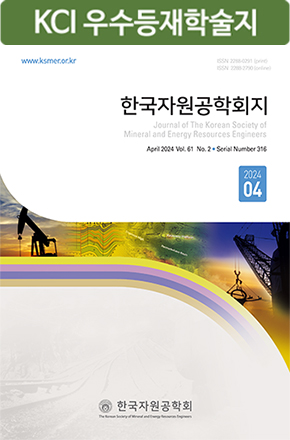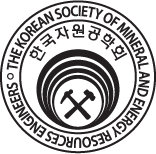Review
- Aboriginal Affairs and Northern Development Canada (AANDC), 2011, Northern Oil and Gas Annual Report 2011, Public Works and Government Services Canada, pp. 7-24.
- Benny, P., Nathan, B., Andrew B., Jason B., Joseph, L., Finn C.A. and Wortington, E.W., 2011, “Geomagnetic Referencing in the Arctic Environment,” SPE Arctic and Extreme Environments Conference and Exhibition, Society of Petroleum Engineers, Moscow, Russia, October 18-20, pp. 2-6.
- Bird, K.J., Charpentier, R.R., Gautier, D.L., Houseknecht, D.W., Klett, T.R., Pitman, J.K., Moore, T.E., Schenk, C.J., Tennyson, M.E. and Wandrey, C.J., 2008, Circum-Arctic Resource Appraisal: Estimates of Undiscovered Oil and Gas North of the Arctic Circle, U.S. Geological Survey, pp. 1-4.
- Cairn Energy, 2013.1.14, http://www.cairnenergy.com/index.asp?pageid=228.
- Clark P. and Weldon, C.P., 2011, “Cathodic Protection Design Considerations for Offshore Structures in the Arctic Environment,” OTC Arctic Technology Conference, Offshore Technology Conference, Houston, Texas, USA, February 7-9, pp. 2-5.
- e-National Indicators, 2013.1.30, http://www.index.go.kr/egams/stts/jsp/potal/stts/PO_STTS_IdxMain.jsp?idx_cd=1164.
- Farrow, K., 2011, What does the National Ocean Policy Mean for the Arctic region?, US Arctic Research Commission.
- François, Côté. and Robert, Dufresne., 2008, The Arctic: Canada’s Legal Claims, Parliament of Canada, pp. 1-6
- Frédéric Beauregard-Tellier, 2008, The Arctic: Hydrocarbon Resources, Parliament of Canada, pp. 1-3.
- Government of Canada, 2009, Canada’s Northern Strategy our North, Our Heritage, Our Future, Minister of Indian Affairs and Northern Development and Federal Interlocutor for Métis and Non-Status Indians, pp. 9-35.
- Keinonen, A.J., 2008, “Ice Management for Floating Ice Offshore Operations,” Offshore Technology Conference, Houston, Texas, USA, May 5-8, pp. 4-7.
- Kingdom of Denmark, 2011, Kingdom of Denmark Strategy for the Arctic 2011-2020, pp. 10-57.
- Ko, J.H., 2011, “Petroleum Geology of the Arctic Barents Sea,” J. of Korean Society for Geosystem Engineering, Vol. 48, No. 4, pp. 499-523.
- Ko, J.H. and Lhee, E.Y., 2007, “Petroleum Geology of the Timan-Pechora Basin in Russia,” J. of Korean Society for Geosystem Engineering, Vol. 44, No. 4, pp. 342-356.
- Korea Energy Economics Institute, 2010, Progress and Effects of the Gulf of Mexico Oil Spill, Energy Highlight, pp. 4-5.
- Korea Energy Statistics Information System (KESIS), 2012.12.28, http://www.kesis .net/flexapp/KesisFlexApp.jsp?menuId=M0101&reportId=&chk=Y.
- Kuo, C.S., 2010, Denmark, The Faroe Lslands, and Greenland, U.S. Geological Survey Minerals Yearbook, pp. 1-6.
- Lee, S.W., Song, J.M. and Oh, Y.S., 2011, Shipping & Port Condition Changes and Throughput Prospects With Opening of the Northern Sea Route, Korea Maritime Institute, pp. 27-32.
- Martin, D., Gregers, D., Niels-Erik, H. and Martin, S., 2011, “Greenland - The New Arctic Hot Spot?,” AAPG-ER Newsletter on the Web, pp. 4-6.
- Martin, J., Christian, M. and LOMROG, Scientific Party., 2007, Lomonosov Ridge off Greenland 2007 (LOMROG), Lomonosov Ridge off Greenland, pp. 20-28.
- Ministry of Foreign Affairs (MFA), 2006, “Barents 2020 - A tool for a forward-looking High North policy,” Norwegian Ministry of Foreign Affairs, pp. 23-42.
- Ministry of Knowledge Economy (MKE), 2011.1.20, http://www.mke.go.kr/mke /news/coverage/bodoView.jsp?pCtx=1&seq=66004.
- National Ocean Council, 2011, “Changing Conditions in the Arctic”, Strategic Action Plan Full Content Outline, National Ocean Council, pp. 1-10.
- Norwegian Petroleum Directorate, 2012.12.28, http://www.npd.no/Global/Norsk/4-Kart/Sokkelkart2012/Sokkelkartet-2012-arealstatus.gif.
- Read, T., Thomas, J., Meyer, H., Wedge, M. and Wren, M., 1993, “Environmental Management in the Arctic,” Oilfield review, Vol. 5, Issue 4, pp. 14-22.
- Rabinowitz, P.D., Francis, T.J.G., Baldauf, J.G., Coyne, J.C., McPherson, R.G., Merrill, R.B. and Olivas, R.E., 1995, “Ocean Drilling Program Results From Tenth Year of Drilling Operations,” Offshore Technology Conference, Houston, Texas, USA, May 1-4, pp. 4-14.
- Recinos, K.E., 2012, A Summary of Environmental Strategies of the Arctic Nations, IASC Secretariat, pp. 1-3.
- Requejo, A.G., Sassen, R., Kennicutt II, M.C., Kvedchuk, I., McDonald, T., Denoux, G., Comet, P. and Brooks, J.M., 1994, “Geochemistry of Oils From the Northern Timan-PechoraBasin, Russia,” Organic Geochemistry, Vol. 23, Issue 3, pp. 1-3.
- Research Department of Statistics Norway (RDSN), 2009, The Economy of the North 2008, Statistics Norway, p. 58.
- Ryu, J.C., Lee, S.G., Lee, Y.K., Sokolov, D. and Choi, Y.M., 2009, Investigation of Influence on the Changes of Russia’s Energy Policy and Energy Cooperation between Korea and Russia due to Changes in the World Energy Markets, Korea Energy Economics Institute, pp. 42-44.
- Schenk, C.J., Bird, K.J., Brown, P.J., Charpentier, R.R., Gautier, D.L., Houseknecht, D.W., Klett, T.R., Pawlewicz, M.J., Shah, A.K. and Tennyson, M.E., 2008, Assessment of Undiscovered Oil and Gas Resources of the West Greenland-East Canada Province, U.S. Geological Survey, pp. 1-2.
- Stoupakova, A.V., Kirykhina, T.A., Suslova, A.A., Kirykhina, N.M., Sautkin, R.S. and Bordunov, S.I., 2012, “Structure and Hydrocarbon Prospects of the Russian Western Arctic Shelf,” OTC Artic Technology Conference, Houston, Texas, USA, December 3-5, pp. 3-4.
- Söderbergh, B., Jakobsson, K. and Aleklett, K., 2010, “European Energy Security: An Analysis of Future Russian Natural Gas Production and Exports,” Energy Policy, Vol. 38, Issue 12, pp. 2-8.
- The Danish Government, 2011, Energy Strategy 2050, The Danish Ministry of Climate and Energy (Klima- og Energiministeriet), pp, 16-28.
- United Nations, 2012.8.21, http://www.un.org/Depts/los/clcs_new/marinezones.jpg.
- U.S. Energy Information Administration (EIA), 2013.1.17, http://www.eia.gov/countries/cab.cfm?fips=KS.
- U.S. Geological Survey (USGS), 2001, Arctic National Wildlife Refuge, 1002 Area, Petroleum Assessment, 1998, Including Economic Analysis, USGS Fact Sheet 0028-01, Washington, DC, USA, p. 3.
- Yang, H.C., Han, H.C. and Park, S.H., 2009, “The Arctic 82 of UNCLOS on the Exploration of the Continental Shelf beyound 200 nautical miles and its legal issues,” KIGAM Bulletin, Vol. 13, No. 1, pp. 32-47.
- Publisher :The Korean Society of Mineral and Energy Resources Engineers
- Publisher(Ko) :한국자원공학회
- Journal Title :Journal of the Korean Society of Mineral and Energy Resources Engineers
- Journal Title(Ko) :한국자원공학회지
- Volume : 50
- No :2
- Pages :297-305
- DOI :https://doi.org/10.12972/ksmer.2013.50.2.297



 Journal of the Korean Society of Mineral and Energy Resources Engineers
Journal of the Korean Society of Mineral and Energy Resources Engineers








